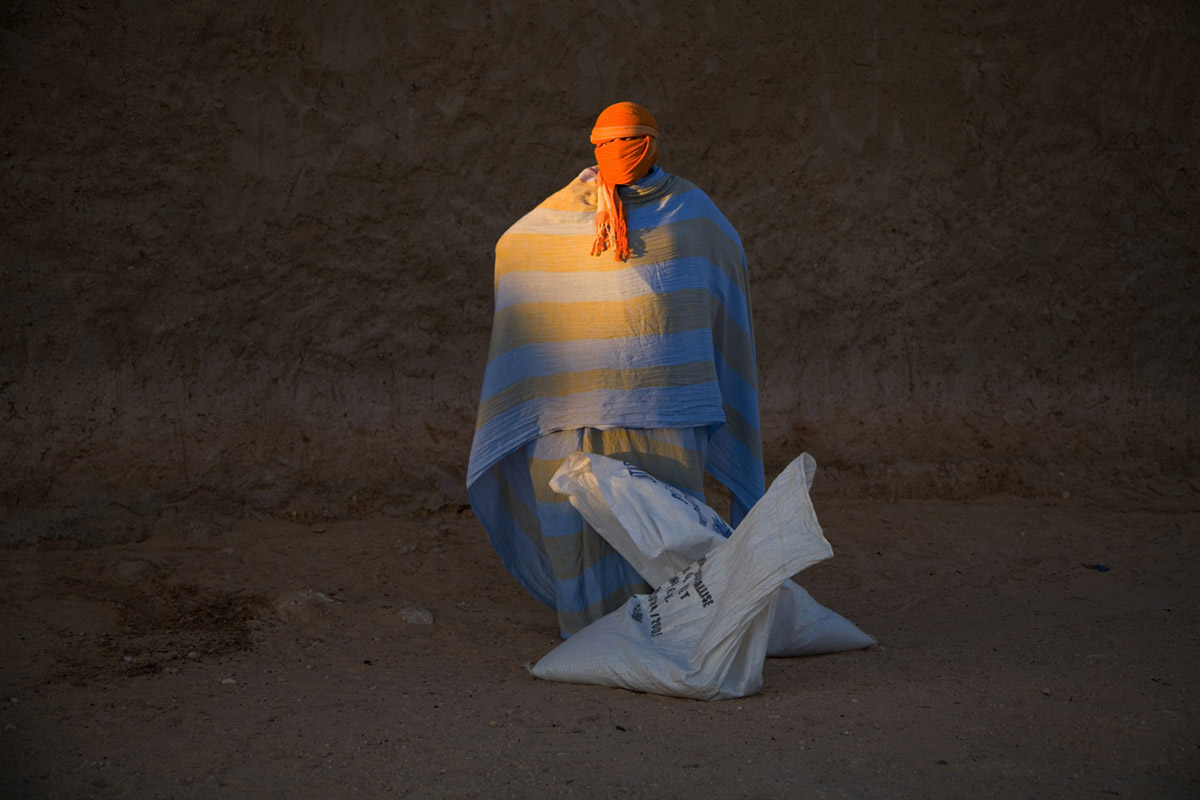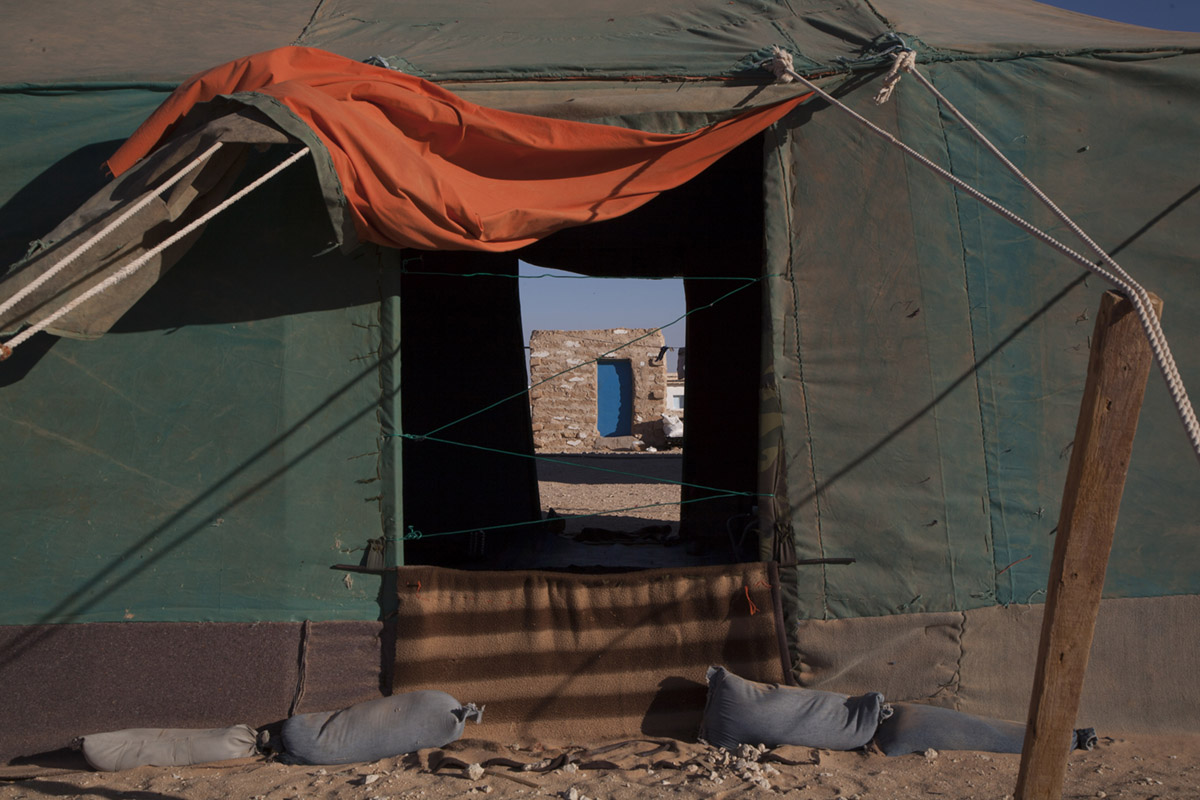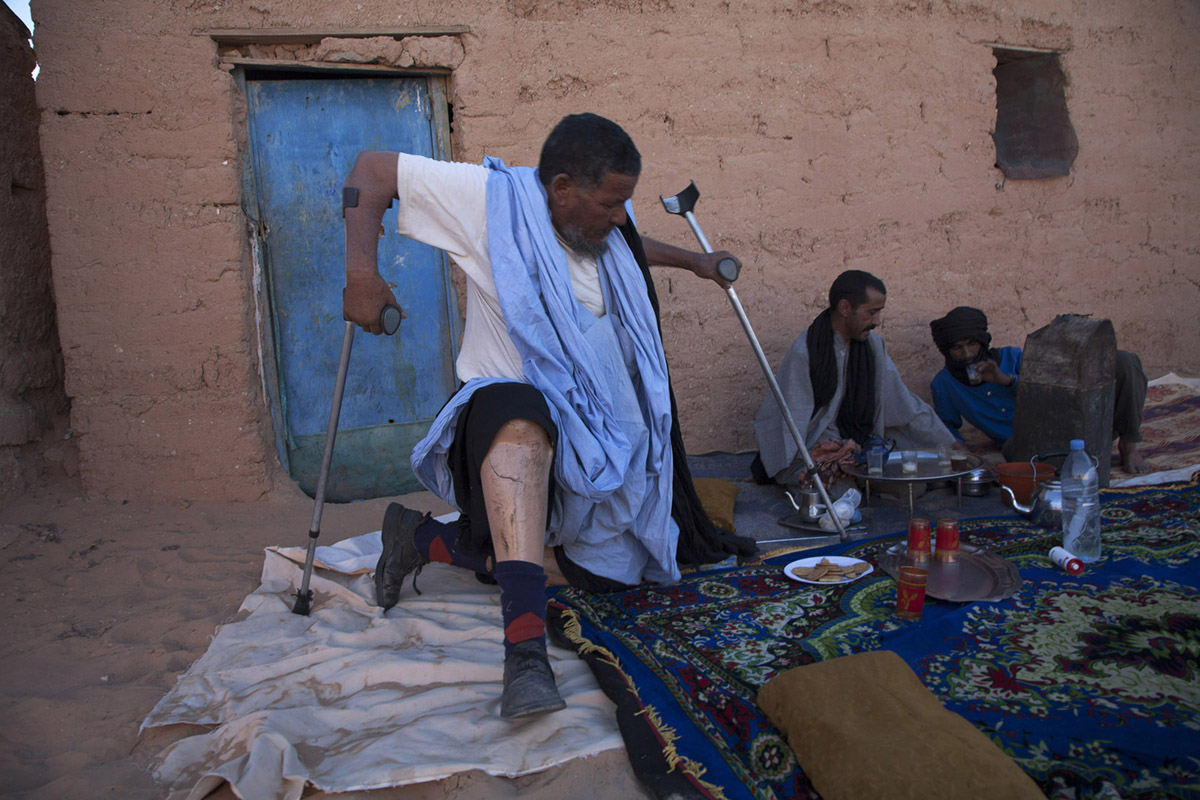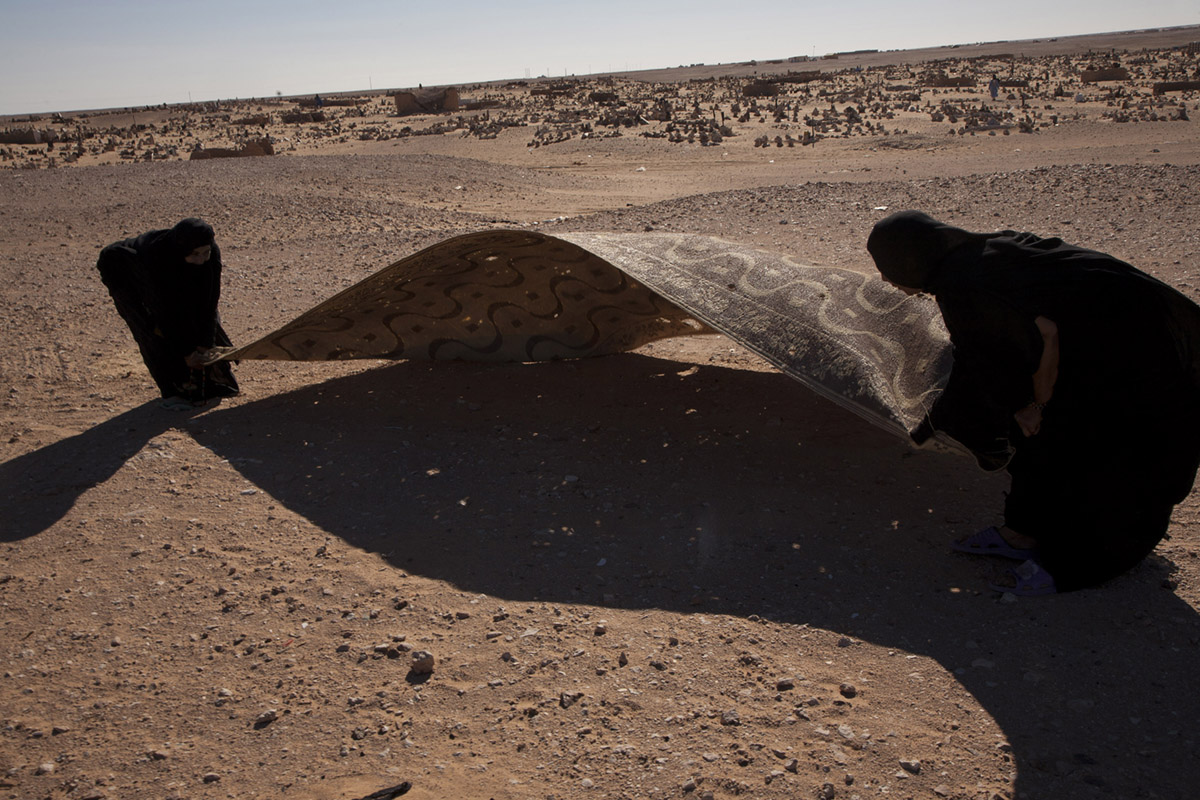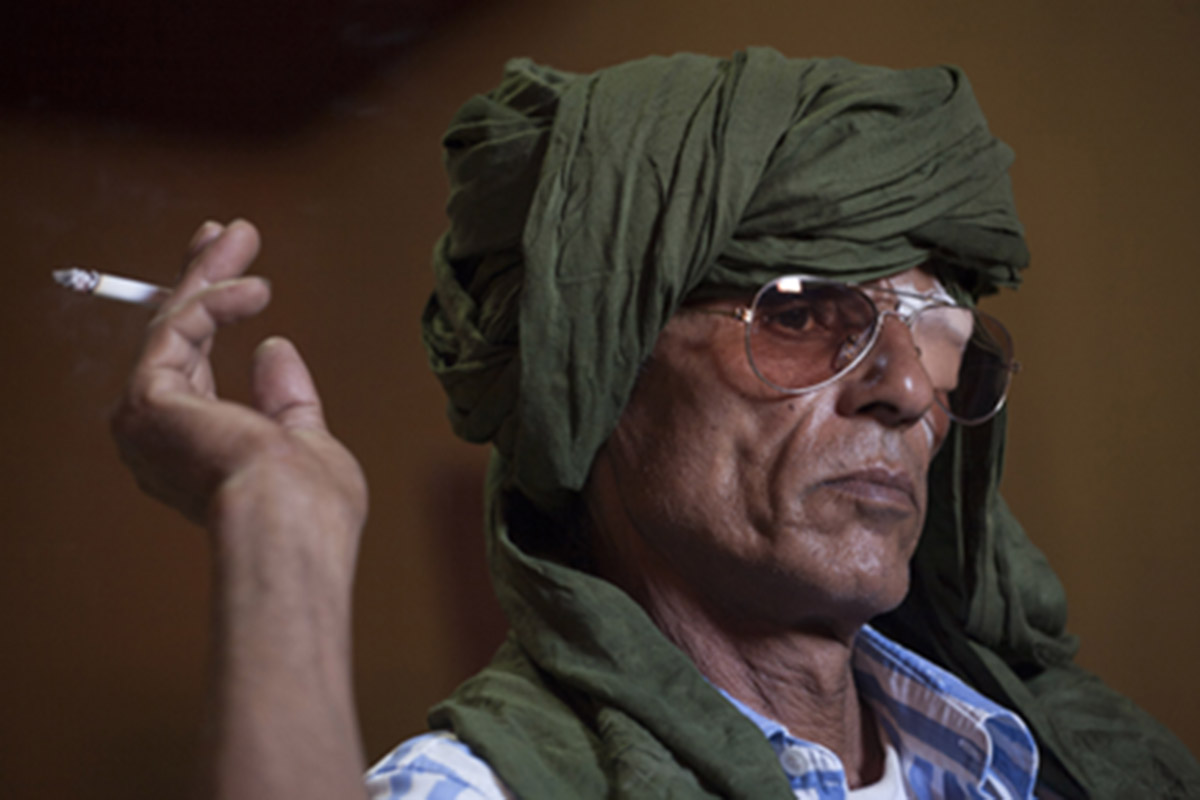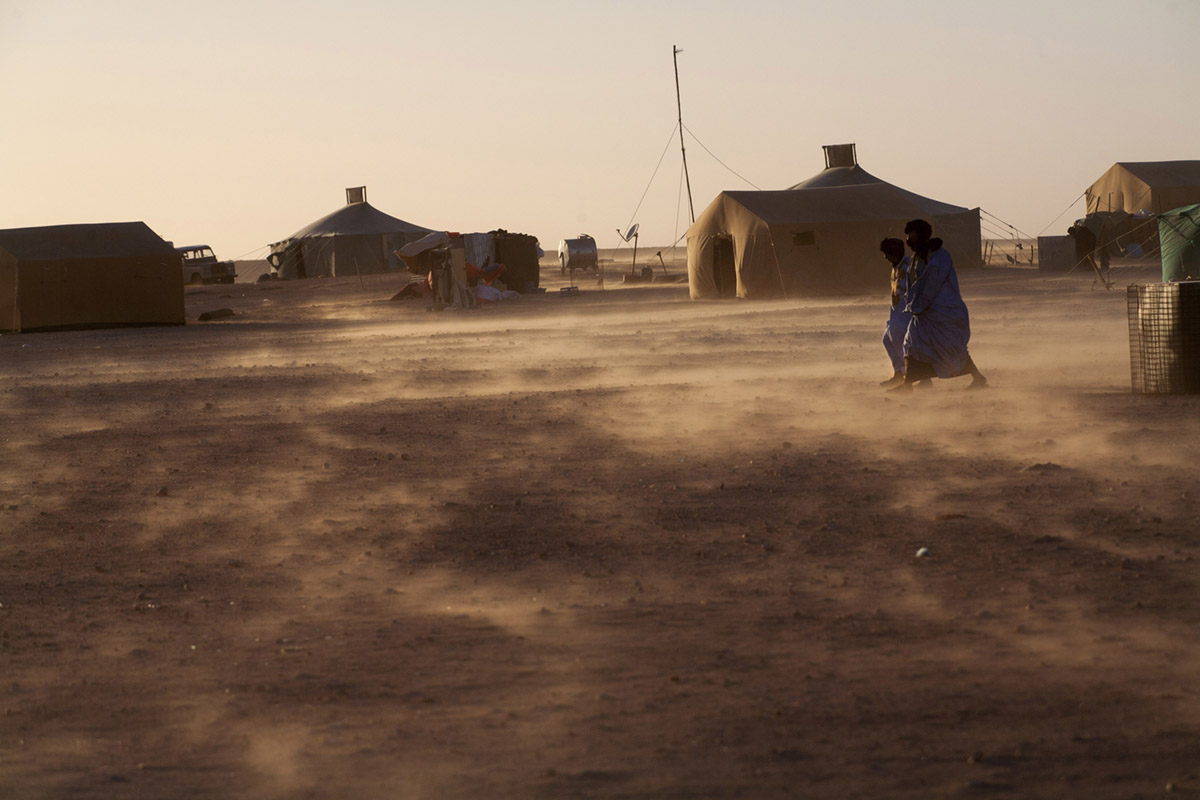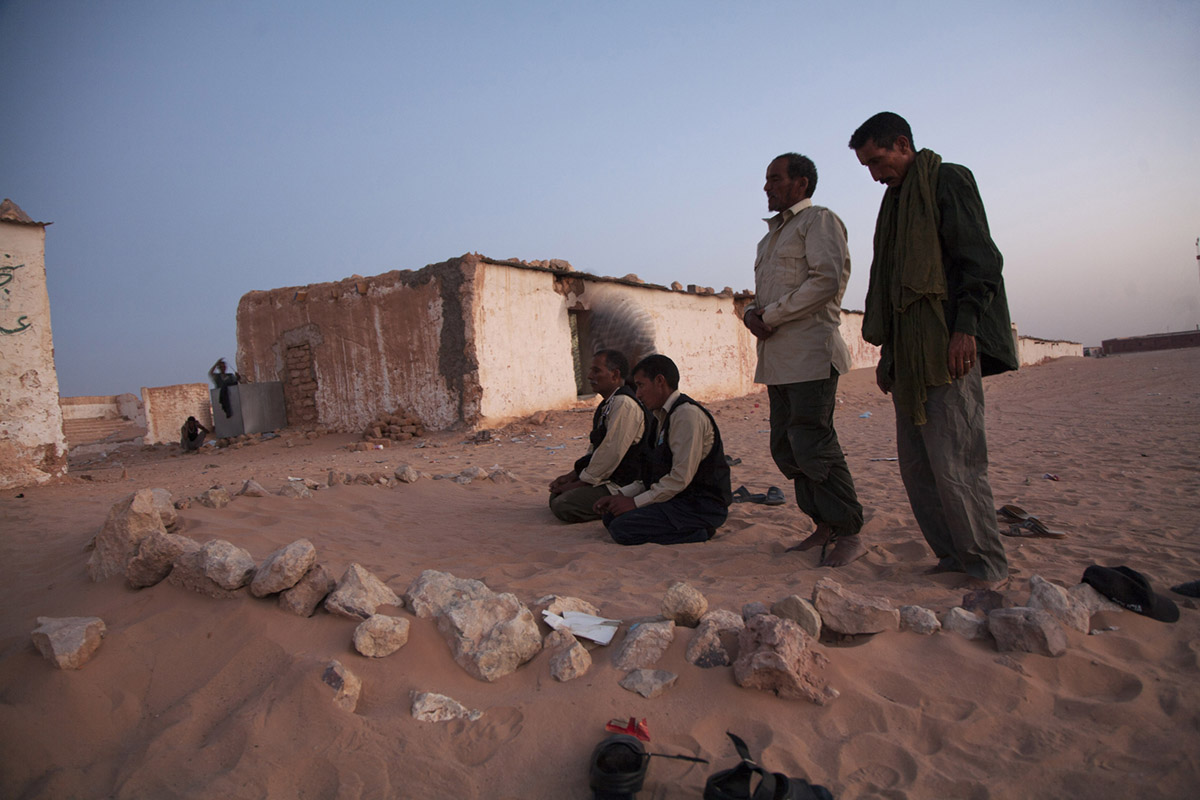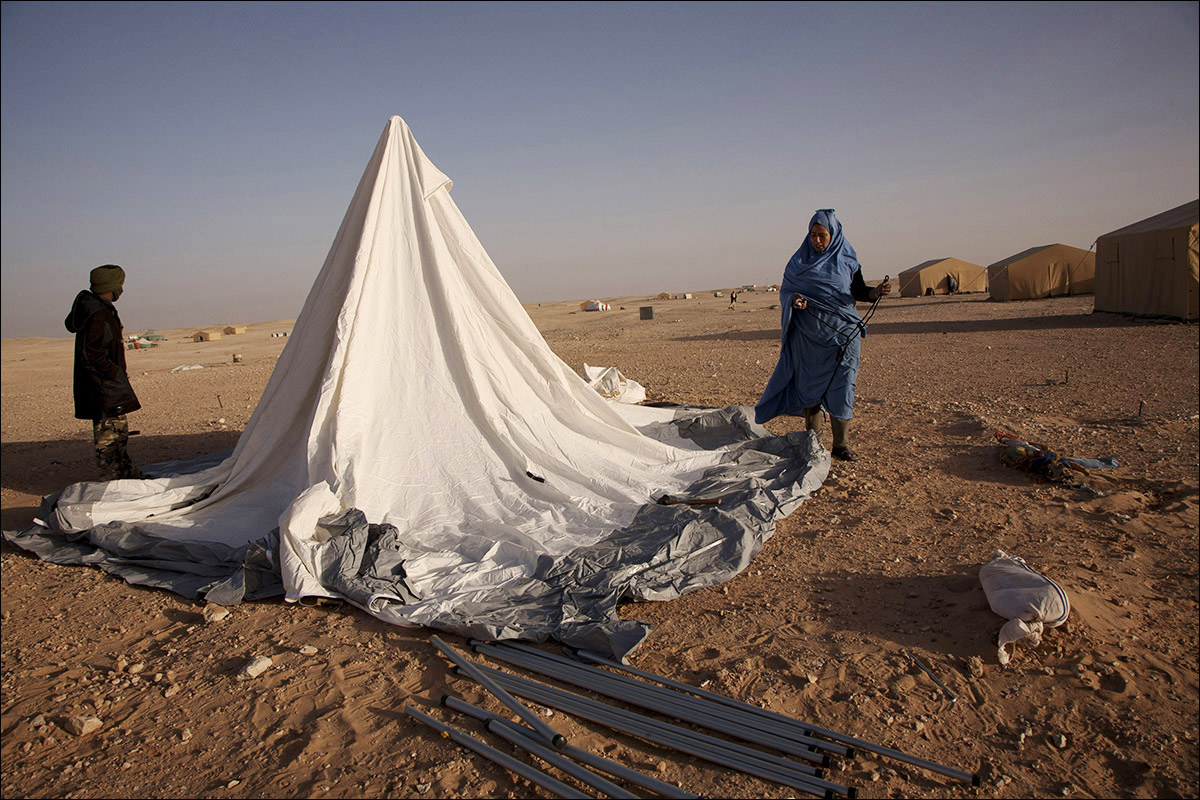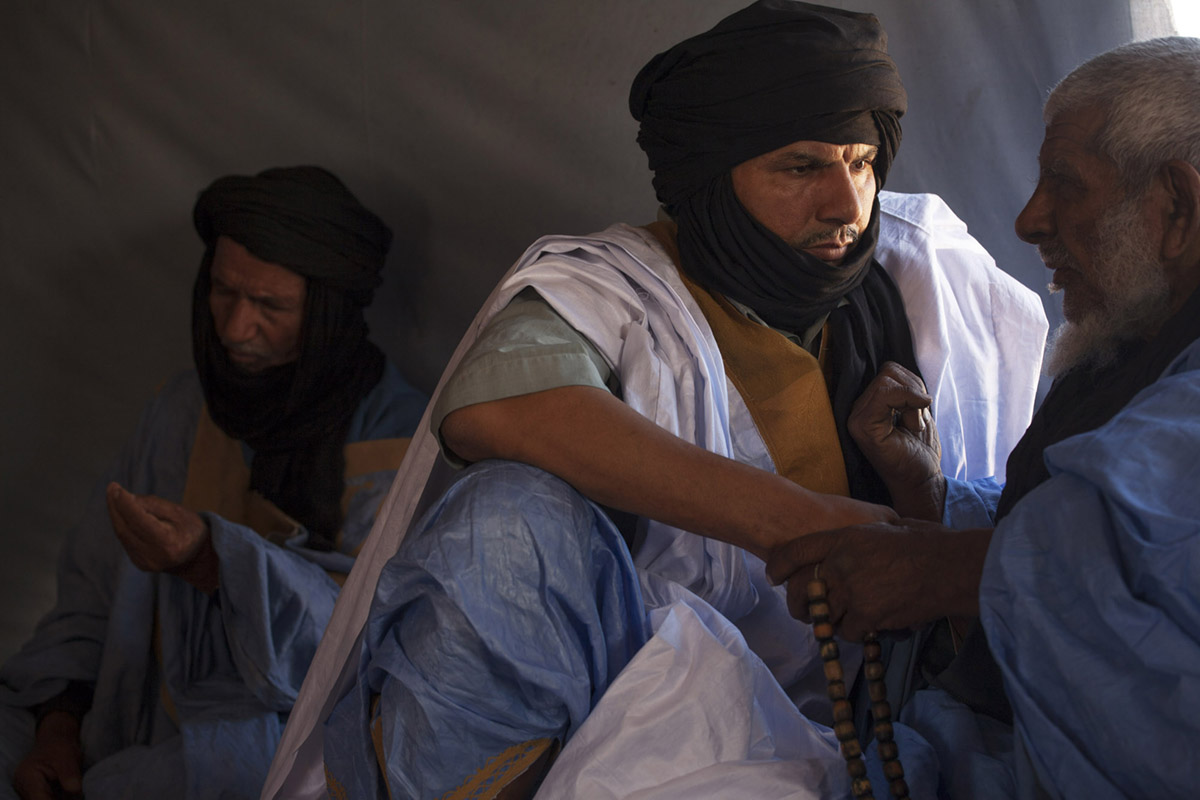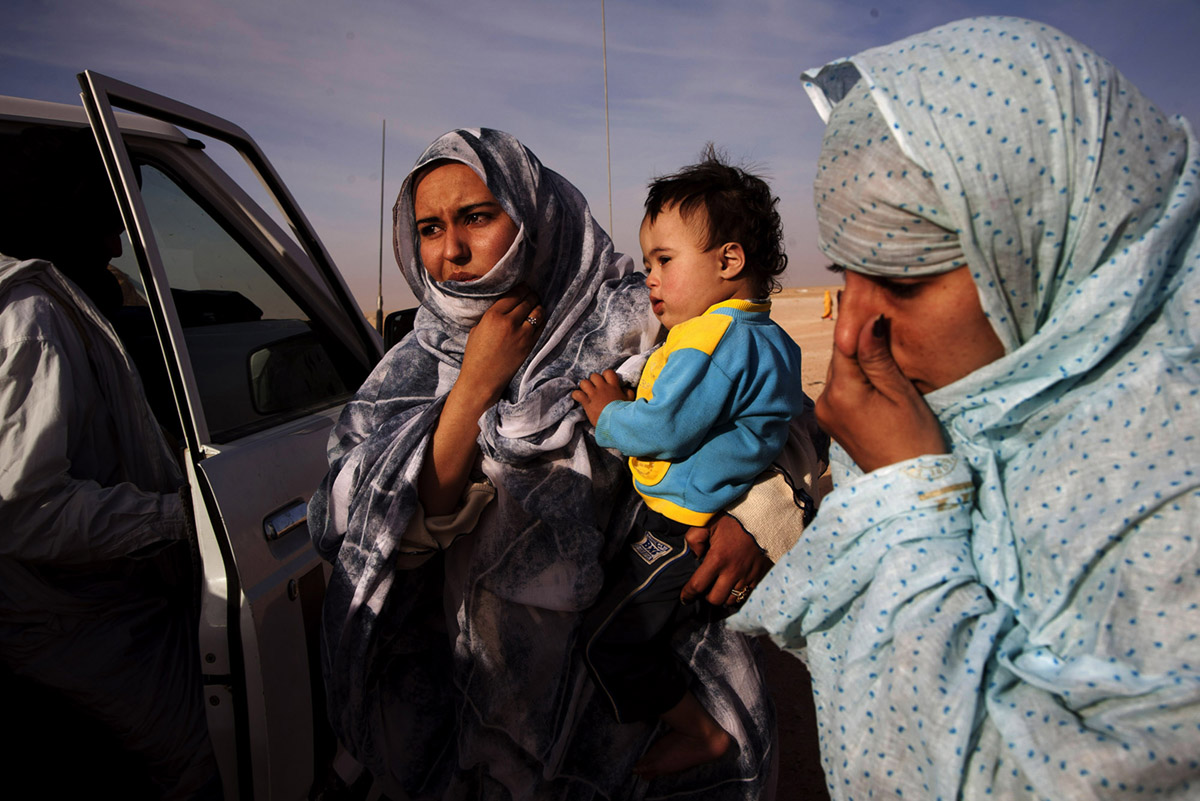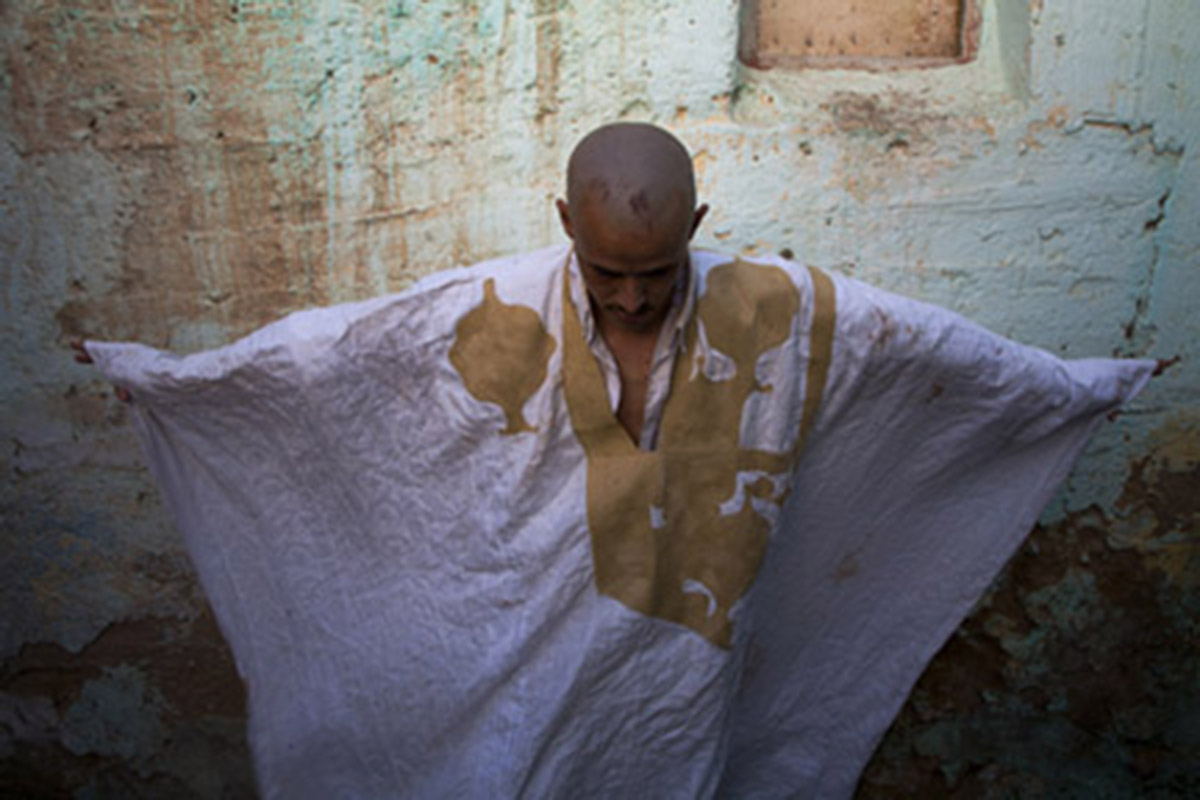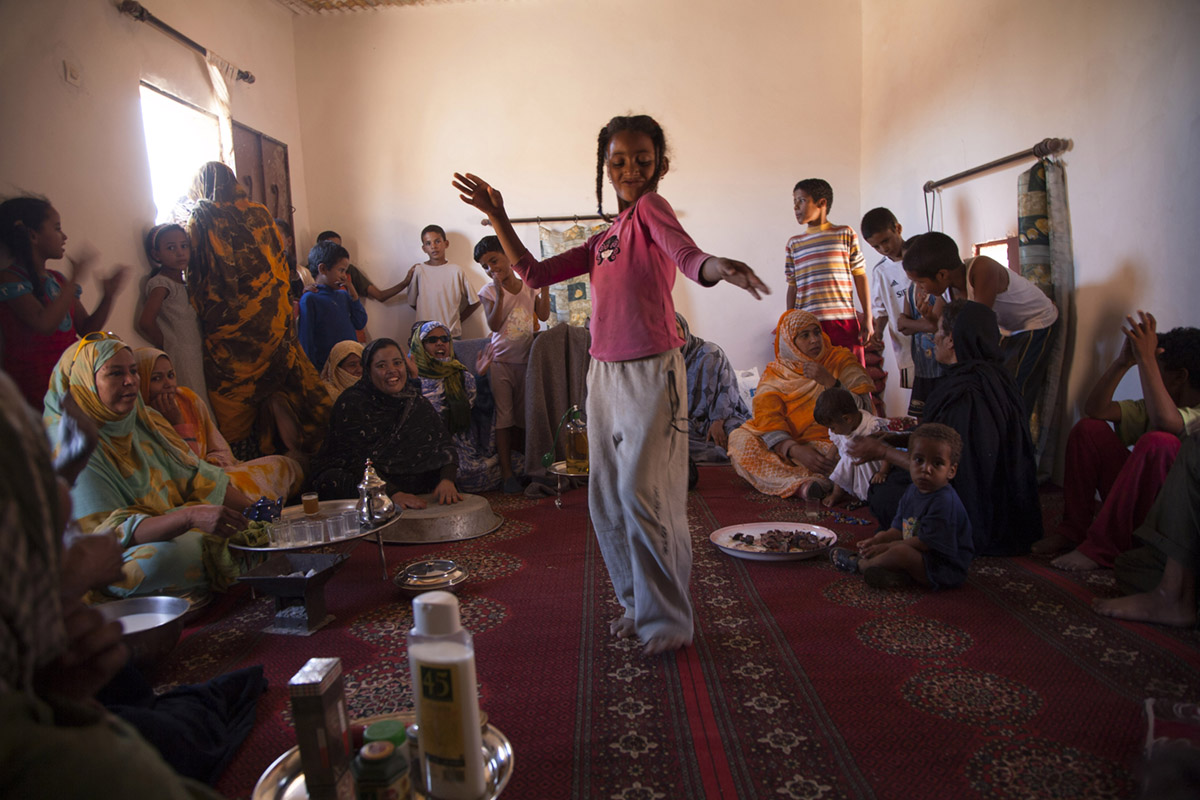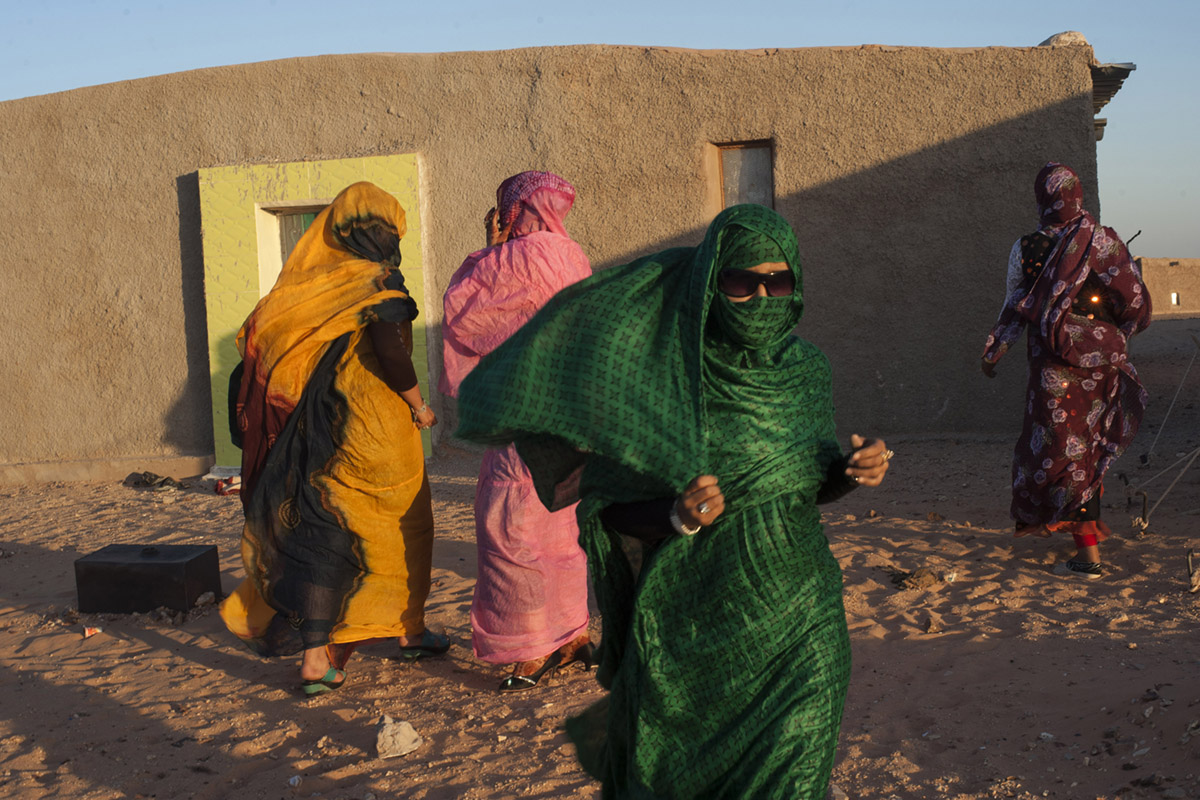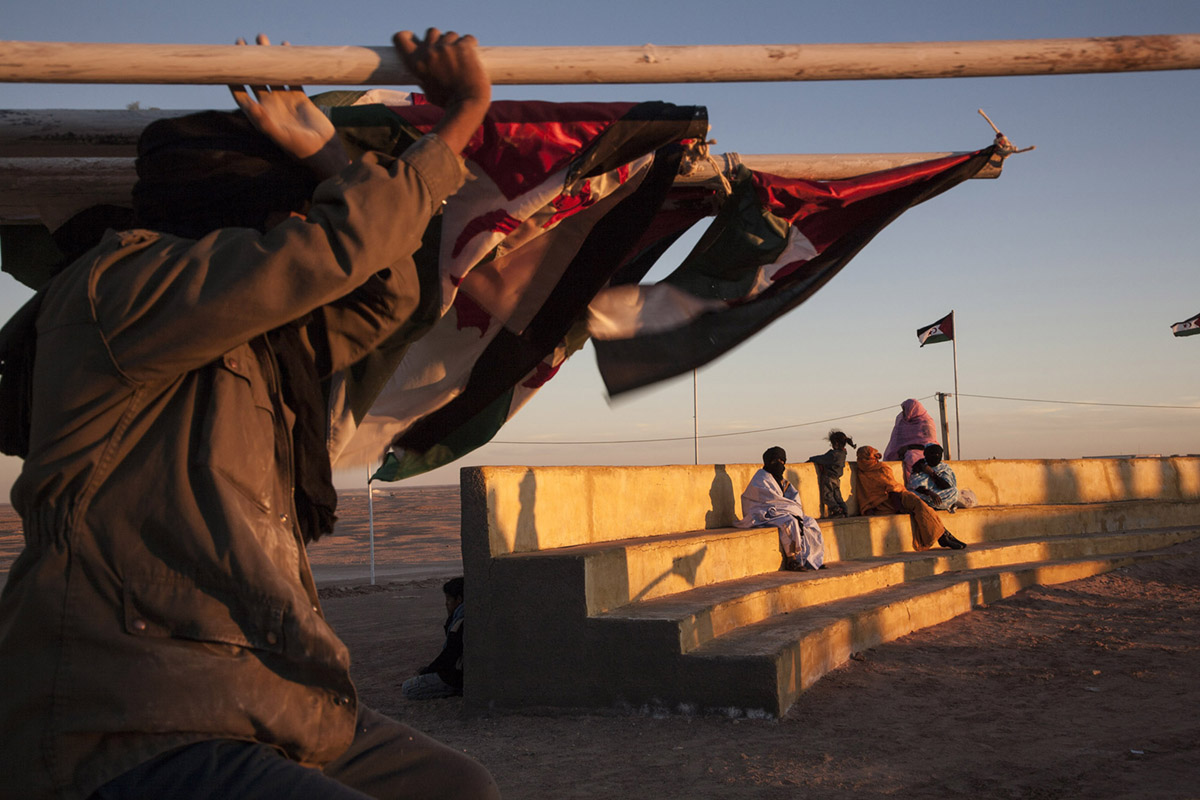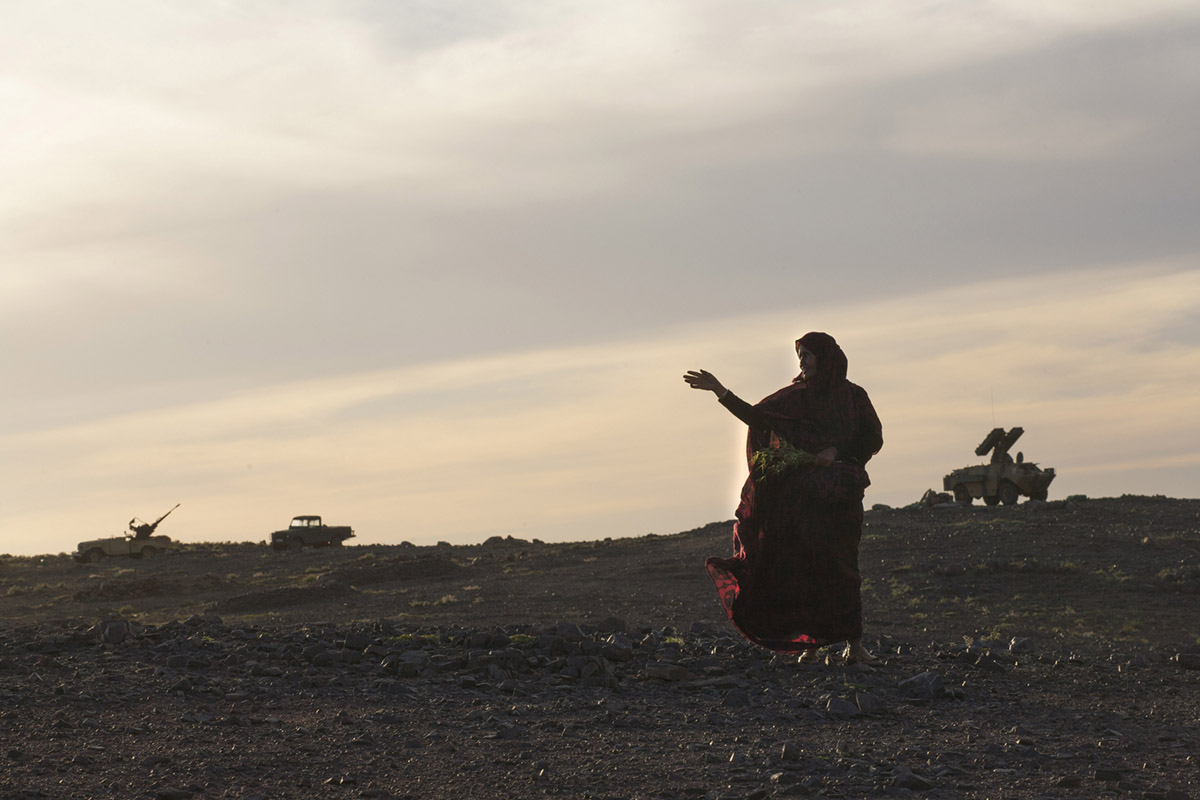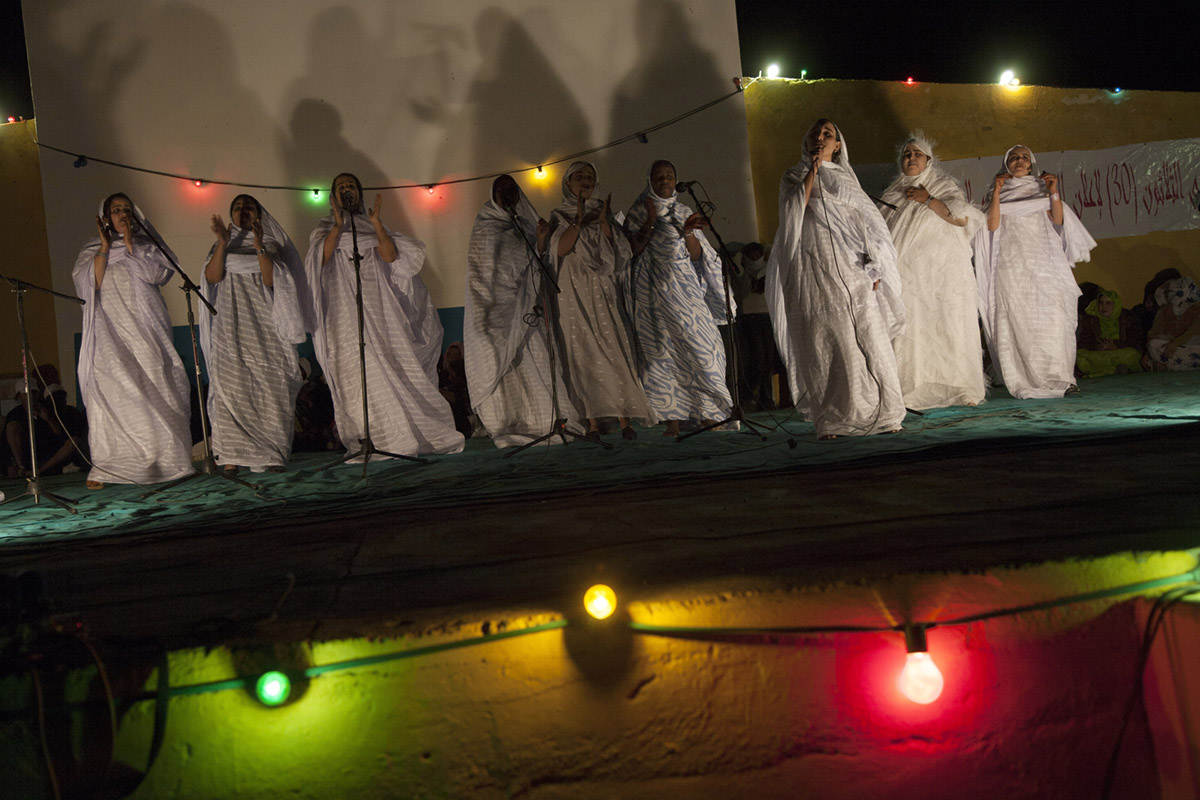This work documents the cultural resistance of the Saharawi people. The Saharawis are an ethnic group native to the Western Sahara that was formed over a thousand years ago by the mixing of Arabs of the Beni Hassan tribes, Berbers, and West African peoples.
When their homeland was invaded in 1976 by Morocco, the Saharawi population was split. The majority live under Moroccan military occupation, while over 150,000 Saharawis fleeing bombardment took refuge in camps situated across the border in Algeria. Almost four decades later, they remain in these camps as Moroccan forces still control most of the Western Sahara. The Moroccan army has built a 1700 mile sand barrier and laid hundreds of thousands of land mines to prevent Saharawi forces from crossing back into the territory.
For me, the remarkable aspect is how the Saharawi refugees maintain their spirits and defend their way of life, despite the hardship and injustice of their plight. They rely on their own deep culture – religion, dress, music and dance – to protect their identity against the threat of disintegration posed by exile and armed occupation of their homeland.
I see fabrics – and particularly the women’s traditional dress, the melfa – as protagonists in this process of cultural resistance. These images show the importance of color and dress as markers of cultural survival and a source of visual relief from the tedium of camp life.
I am grateful to the Gamma Presse Images agency, National Geographic, and The Aftermath Project for supporting this project over the years.

